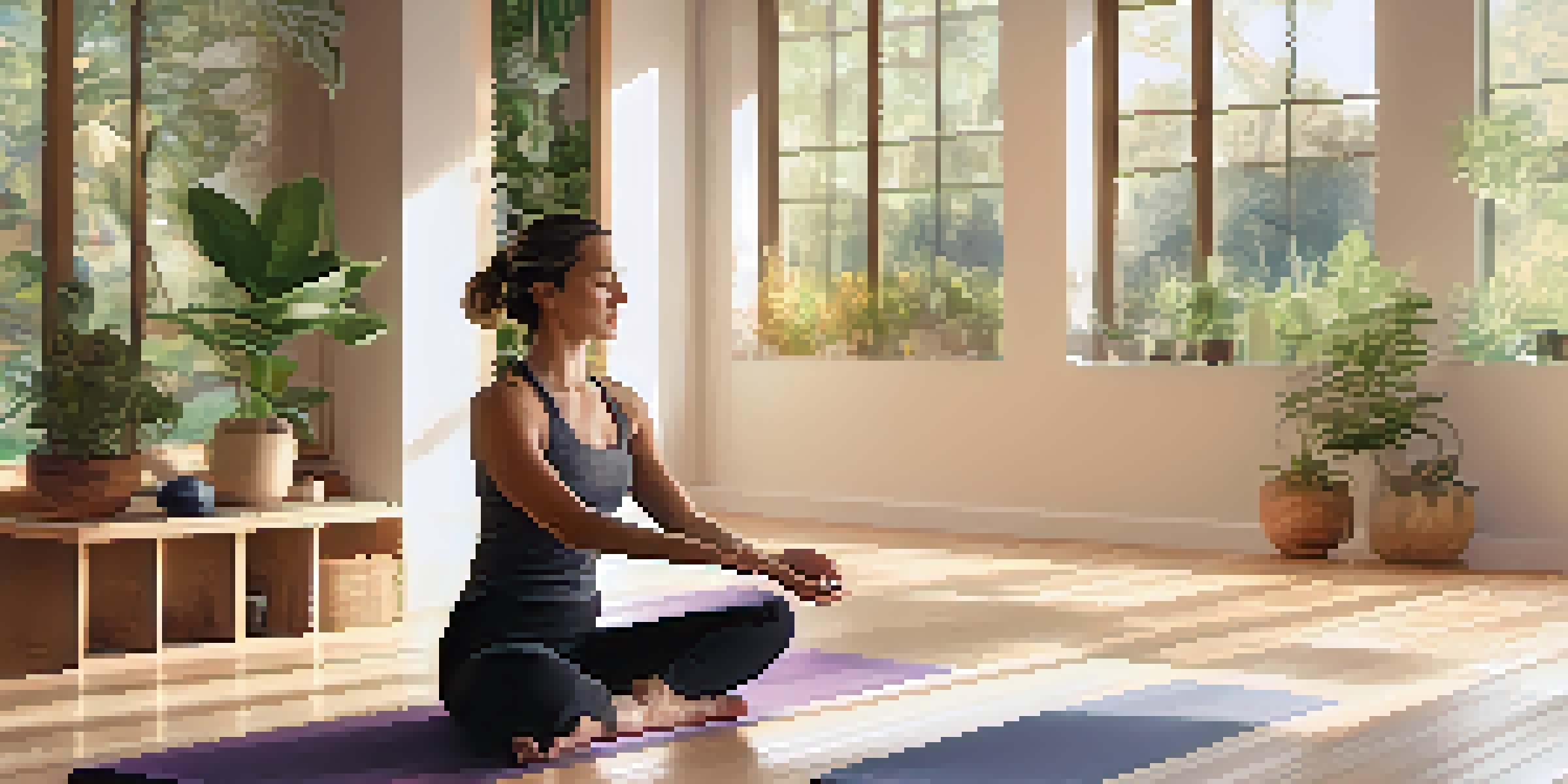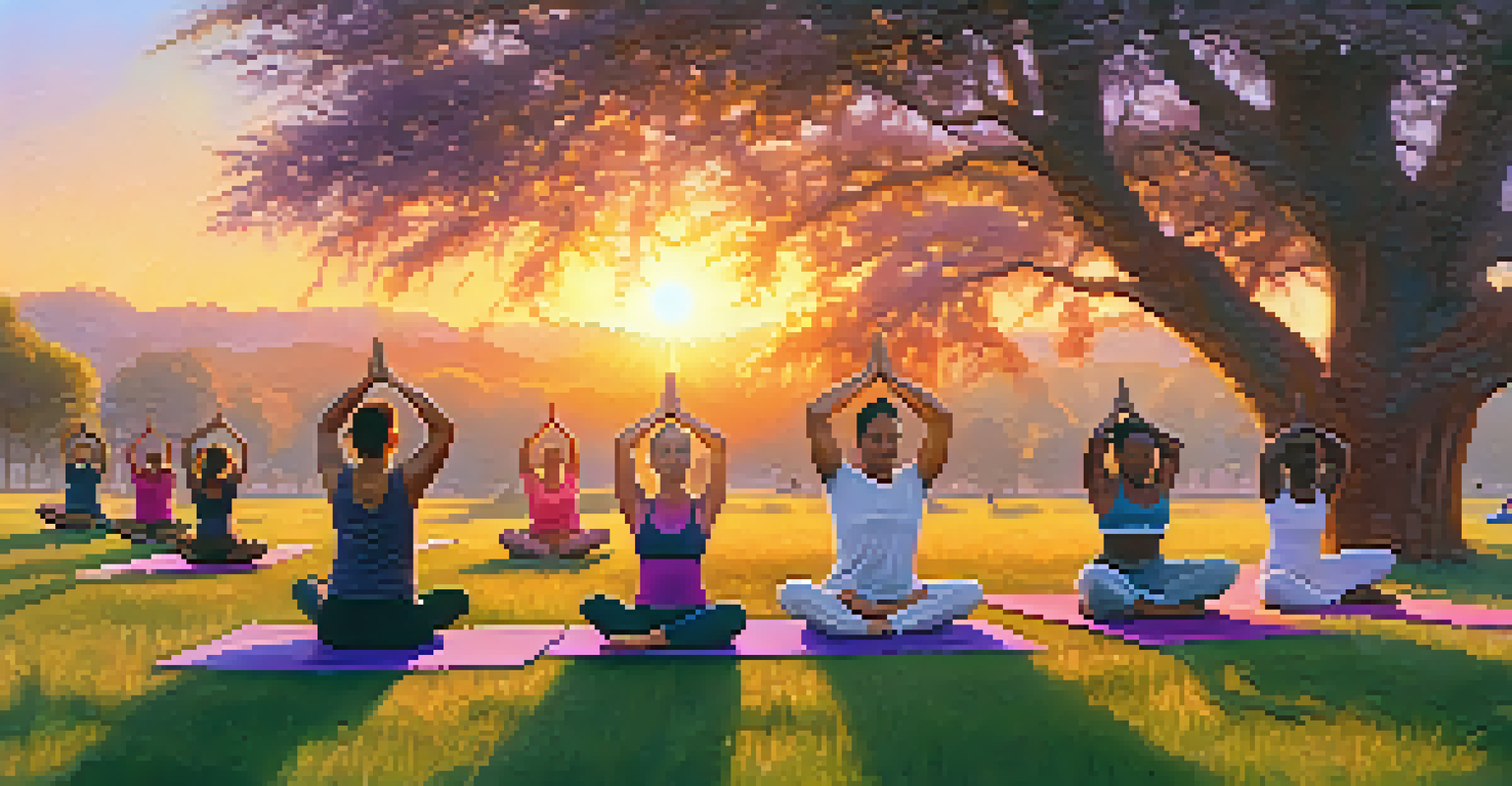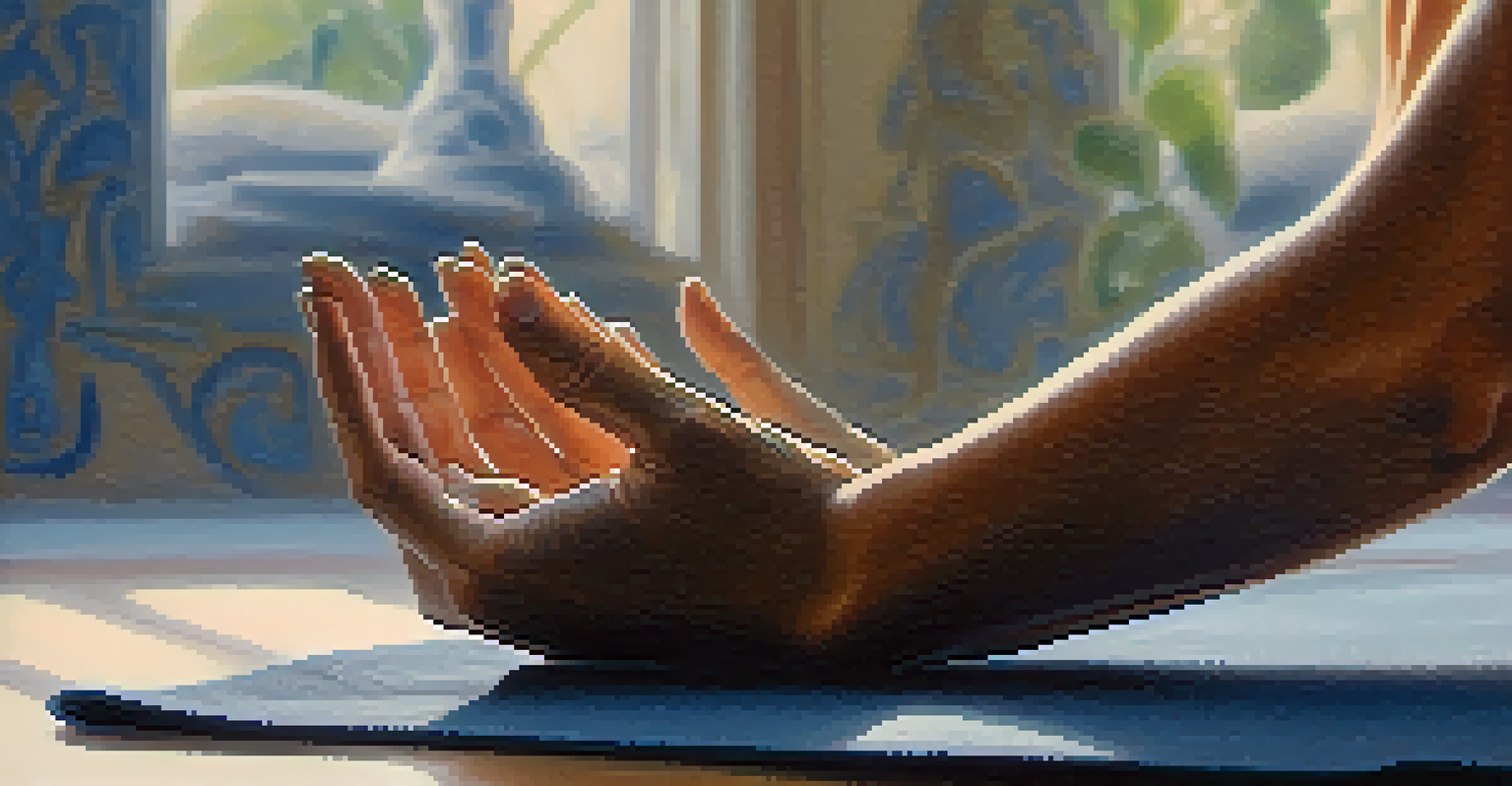The Impact of Breath Control on Yoga Flexibility and Strength

Understanding Breath Control in Yoga Practice
Breath control, known as 'pranayama' in yoga, refers to the techniques used to regulate breath. This practice is foundational in yoga as it connects the body, mind, and spirit, enhancing overall well-being. By focusing on the breath, practitioners can cultivate a deeper awareness of their body’s movements and limitations, paving the way for improved flexibility and strength.
Breath is the bridge which connects life to consciousness, which unites your body to your thoughts.
When you consciously control your breathing, you create a rhythm that complements your physical postures or 'asanas'. This rhythmic breathing not only helps in maintaining balance but also aids in sustaining longer holds of poses. It's like setting a steady tempo for a dance; the better the rhythm, the more fluid and powerful the performance.
Moreover, breath control can significantly reduce stress and anxiety, allowing for a more focused and relaxed practice. When the mind is calm, the body can perform at its best, making each yoga session not just a workout but a holistic experience.
The Connection Between Breath and Flexibility
Flexibility in yoga goes beyond simply stretching the muscles; it involves the body's ability to respond to breath. As you inhale deeply, your body becomes more pliable, allowing you to ease into stretches. This interplay between breath and movement encourages a greater range of motion, which can help prevent injuries.

For instance, in poses like forward bends, deep inhalations can create space in tight areas, enabling a deeper stretch. Conversely, exhaling can help you relax into the pose, releasing tension. It’s as if each breath acts as a guide, leading you deeper into your practice with greater ease.
Breath Control Enhances Yoga Practice
Practicing pranayama connects body, mind, and spirit, improving overall well-being and performance in yoga.
This connection also fosters mindfulness, as paying attention to your breath helps you stay present in the moment. Practicing breath control during stretching not only enhances flexibility but also promotes a meditative state, enriching the overall yoga experience.
How Breath Influences Strength Building in Yoga
While many associate yoga primarily with flexibility, it also plays a crucial role in building strength. Breath control is vital for maintaining stability in challenging poses that require muscular engagement. By coordinating breath with movement, you can harness your body's strength more effectively.
The breath is the anchor of the mind. When the breath is calm, the mind is calm.
For example, in poses like plank or warrior, controlled breathing helps activate the core muscles, promoting endurance. Inhaling during the ascent and exhaling during the descent can create a rhythm that maximizes strength output. Think of it as a well-timed pulse that fuels your body’s power.
Additionally, breath control aids in managing fatigue. When you're mindful of your breath, you can push through challenging sequences with greater resilience. It’s like having an internal coach that encourages you to maintain focus and strength throughout your practice.
The Role of Breath in Balancing Mind and Body
Breath acts as a bridge between the mind and body, creating a harmonious balance essential for effective yoga practice. When you breathe deeply, it sends signals to your brain that promote calmness and focus, allowing your body to engage more fully in each pose. This balance is key to unlocking your physical potential.
In moments of challenge, such as holding a difficult pose, maintaining a steady breath can help mitigate feelings of stress or discomfort. Instead of tensing up, you learn to embrace the moment, finding strength in stillness. It’s similar to how an athlete finds their center before making a crucial play.
Breath Influences Flexibility and Strength
Coordinating breath with movement fosters greater flexibility and strength while helping to manage fatigue.
Ultimately, the interplay of breath with movement fosters mental clarity, which is just as important as physical prowess. This holistic approach not only enhances your yoga practice but also translates to improved performance in daily life.
Pranayama Techniques for Enhanced Yoga Practice
Incorporating pranayama techniques into your yoga routine can amplify both flexibility and strength. Techniques like 'Ujjayi' (victorious breath) and 'Nadi Shodhana' (alternate nostril breathing) are designed to enhance awareness and control over your breath. These practices can help create a focused environment for your yoga session.
For instance, Ujjayi breathing involves a slight constriction of the throat, producing a soothing sound that encourages deeper inhalation and exhalation. This technique can increase oxygen flow and energize your practice, allowing your body to move more fluidly through poses. It’s like turning up the volume on your internal energy.
Similarly, Nadi Shodhana helps to balance the nervous system, promoting relaxation and clarity. This is particularly beneficial before diving into a challenging sequence, as it enables you to enter your practice with a centered mind and a strong foundation.
Creating a Breath-Centric Yoga Routine
To truly harness the benefits of breath control, consider designing a breath-centric yoga routine. Start by selecting poses that align with your breathing rhythm, allowing you to seamlessly integrate breath into movement. For instance, you might pair forward folds with deep inhalations and gentle exhales.
Additionally, allocate time for pranayama at the beginning or end of your practice. This could be as simple as spending a few minutes focusing on your breath before transitioning into your asanas. It’s akin to tuning an instrument before a performance; a little preparation can lead to a more harmonious experience.
Mind-Body Balance Through Breathing
Deep breathing promotes calmness and focus, creating a harmonious balance essential for effective yoga practice.
Remember, the key is to listen to your body and adapt your routine as needed. Every practice is unique, and by prioritizing breath control, you’ll cultivate a deeper connection to your body and enhance your overall yoga journey.
Conclusion: Embrace Breath for Greater Yoga Benefits
In conclusion, breath control is not just an ancillary aspect of yoga; it is a fundamental element that profoundly influences flexibility and strength. By understanding and practicing pranayama, you can unlock new levels of physical and mental capability. It’s a journey of self-discovery that goes beyond the mat.
As you continue to explore the relationship between breath and movement, you’ll find that each inhale and exhale has the power to transform your practice. Just like a musician finds their rhythm, you too can discover yours through the art of mindful breathing.

So, the next time you roll out your yoga mat, remember that your breath is your greatest ally. Embrace it, and watch as it elevates your practice and enriches your life beyond the yoga studio.